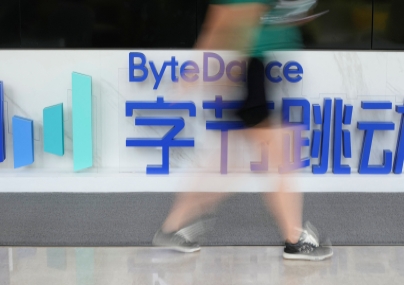In September, U.S. medical technology company Medtronic announced a $755 million merger with Chinese Orthopaedic devices manufacturer KangHui. In a press release, Medtronic’s executive vice president Chris O’Connell described China as “one of the fastest growing medical device markets
with significant scale opportunities.”
The Medtronic merger follows a series of other M&As in the Chinese biotech sector. According to the Centre for Asia Private Equity Research, in the first half of the current year, private equity investments in the Chinese healthcare sector amounted to $489 million, double that of last year. The centre attributed this sudden rise to the increased spending by the Chinese government, and its reforms measures.
Significantly, in its 12th Five Year Plan from 2011 to 2015, Beijing has allocated $3 billion on innovative medicine, the cultivation of new varieties of genetically modified organisms, and the prevention and control of infectious diseases. The government’s efforts to promote the industry also include legal and regulatory reform measures. For example, in 2011, it relaxed certain restrictions in respect of foreign
investment in hospitals and diagnostic centres.
The Chinese government is also setting up biotech zones across the country to support for new drug innovation, which until now has been a weakness of the Chinese biotech industry. According to Richard Bird, counsel at Freshfields Bruckhaus Deringer, China has been relatively slow in this area, and there are currently not many promising products and technologies in the pipeline, he says.
The foreign pharmaceutical companies too have made investments mostly in their own R&D and biomedical centres. In November 2009, the U.S. pharmaceutical giant Novartis announced an investment of $1 billion over a period of five years. This money is going into its Chinese research facility, and also the expansion of the Novartis Institute for BioMedical Research in Shanghai.
MANY OPPORTUNITIES
Tony Wang, a partner at Weil, Gotshal & Manges, notes that foreign investment in the biotech, pharmaceutical and healthcare industries remain attractive to multinational companies and private equity investors. According to him, many companies making investments in China’s biotech sector see the potential of lowering R&D costs in China in connection with the development of new products. In addition, companies have also used joint ventures and other strategic partnerships to distribute their products in the Chinese market.
Demographics are also playing a vital role in the growth of this sector. The Chinese population, while getting richer, is also becoming older, thus making it a huge consumer market for biotech products.
The large population also makes China a good source for collecting clinical trial data, and already the vaccine market and supply chain in China are relatively mature, says Bird. “In the near future, novel vaccine products are expected to contribute to the greatest growth of the Chinese biotech sector,” he says, “more so because the Chinese government has listed the novel vaccine industry as a sector where foreign investment is encouraged.”
CHALLENGES REMAIN
However, investing in the Chinese biotech sector is by no means a simple task as the sector poses several challenges related to regulatory and transparency issues. According to Wang, for many companies, these relate to legal and regulatory compliance issues, corporate governance, intellectual property rights and financial and accounting due diligence issues. In this regard, he advises his clients to be patient, and also to prepare for a steep learning curve.
The Chinese regulatory maze is considered to be the most challenging part of a biotech M&A transaction as the regulators involve multiple government departments at different levels. “In addition to the general approvals of foreign investment and corporate registration, the transaction may also need to be approved by an industrial regulator like the State Food and Drug Administration (SFDA) and the regulator of biopharma products,” says Bird.
For an M&A transaction involving a biopharma company with a new product in the pipeline, the SFDA’s approval for clinical trials may take about a year to obtain, with the permission to market it taking another, says Bird. It is important to consider these timelines in terms of deal structure and payment milestones, he adds.
One option for buyers trying to get around the problem is to have a R&D collaboration during the clinical trial phase, before finally buying out the partner’s share once the product is approved, says Bird.
The ownership of the intellectual property, and the products manufactured using the same remain the most critical part of any biotech related deal, and take the longest time to negotiate in a joint venture. “Generally, the IP infrastructure in China does infuse enough confidence, and the government has made great efforts to improve it further,” says Bird, while adding that “taking action against IP infringement remains a big concern for foreign investors in China.” For this reason, he strongly advises the inclusion of robust risk mitigation measures in the deal structure and the transaction documents.
Indeed, protection of IP rights is the primary issue negotiated by foreign investors in China. In a joint venture deal currently under negotiation between a Chinese and a foreign party, very strong IP protection clauses have been proposed by a strategic foreign party that is represented by Helen Jiang, senior counsel at Weil’s Shanghai office.
In case of any IP dispute the foreign company will have recourse to termination rights, buyout rights and other remedial provisions. “This way, the core IP will be transferred to our client if the local party breaches the joint venture contract,” says Jiang. In addition, the foreign party has retained certain core IP rights that are essential to the joint venture to provide additional leverage against the local party.
Serious IP-related regulatory issues also arise when the IP is owned by the Chinese party.
For example, according to Chinese patent law, if the inventors of the product are employees of the company owning the patent, they will also receive royalties from the commercial exploitation of the patent. If there is no agreement between the employer and employee over the sharing of financial benefits, then the statutory provisions come into play and the employee can claim a certain percentage of the royalty or commercial benefit arising from the invention.
Taking into account the latest developments in the biotech industry, the Chinese government is in the process of updating and reviewing other laws in the biotech sector. They include the IP law, the patent law, the copyright law, and the trademark draft.
DUE DILIGENCE
With a long list of potentially hazardous issues facing any biotech deal, the importance of legal, operational and financial due diligence cannot be overstated. In fact, according to Jiang, “in comparison to other industries the biotech industry carries higher risks. In many failed transactions the company’s financial books and records may not have been accurate or even falsified, and in some other cases, the company does not hold the required licences or FDA approval,” she says.
Furthermore, according to Jiang, “particularly for U.S. investors, the compliance with the Foreign Corrupt Practices Act is another major issue to deal with.” As most hospitals and other healthcare providers in China are state controlled, the government invariably becomes the biggest client of any biotech company, and this can raise serious proprietary issues. “The first question that would come to any Western investor is how the target company actually gets its business,” says Jiang, “we often discover that a local company in China may have material non-compliance issues, particularly as it relates to FCPA.”
According to Bird, information related to a company’s market standing, approved products and approved patents are publicly accessible. However, as China has not established a database for ongoing lawsuits and government proceedings, the due diligence in this regard is largely based on the information provided by the target.
Furthermore, insufficient records of R&D processes are a challenge that lawyers often face. According to Bird, proper representations and warranties should always be included in transaction documents to cover potential losses or third-party claims arising from improper information.
Jiang advises that the rigorous compliance policies are critical for ensuring that both the parties are on the same page regarding a company’s future business model and therefore these policies should be discussed in detail. “Recently, a deal fell through because the Chinese company was unwilling to accept the foreign party’s strict compliance standards,” she says. “However, we do see that all compliance standards are improving.”
CORPORATE STRUCTURES
While setting up R&D facilities in China, multinational biotech companies always prefer fully owning them in order to rule out IP protection issues. Indeed, in March 2011, Pfizer transferred the whole of its antibacterial R&D centre from the U.S. to Shanghai.
However, according to Bird, foreign biotech and pharmaceutical companies have yet to fully bring over their core R&D activities, and create upstream intellectual property in China. “This is due to the technology export control regulations and the general IP protection environment in China,” he says.
That said, a partnership with a local company makes good sense when the investor requires a new manufacturing licence, says Jiang. “To acquire such a licence from FDA it takes several months,” she says.
In most joint ventures the Chinese and foreign parties take on predictable roles. “As the foreign investors are very concerned with product quality and compliance issues, especially, those relating to anti-bribery laws, they usually nominate their own candidates to head these departments,” says Bird, “while the
Chinese partners control the management of sales and marketing.”
Citing a recent example of a joint venture between MedImmune and WuXi AppTec for the R&D of a biopharma product, Bird says that, the Chinese partners in that deal provided local regulatory, manufacturing, and clinical trial support while foreign investors contributed the core IP with proper risk mitigation measures.
Regarding corporate structures adopted by the foreign investors, Bird says that, depending on tax arrangements, foreign investors generally use an offshore vehicle or one based in Hong Kong.
THE ROLE OF LAWYERS
The boom in the biotech sector also presents several opportunities and challenges to the law firms, many of whom have established dedicated teams to serve the industry. According to Wut, Baker & McKenzie’s pharmaceutical and healthcare practice comprises of lawyers who have a background in science and also those who have previously worked in pharmaceutical companies. “Nowadays, clients expect their lawyer to have some understanding of how the industry works, and what are the typical
issues,” she says.
More importantly, Liu says that, while conducting IP due diligence for the life science sector, there are several technical tasks that a law firm may undertake.
For this reason, she says, lawyers with the relevant industry training and background can better help their clients to identify any underlying issues found during the due diligence exercise and to discuss them timely with the clients’ in-house teams.
According to Wang, biotech lawyers must also understand compliance procedures for approval of drugs, devise, licensing requirements, foreign ownership requirements, the monopoly law, and antitrust concerns.
Follow us on Twitter: @ALB_Magazine.


